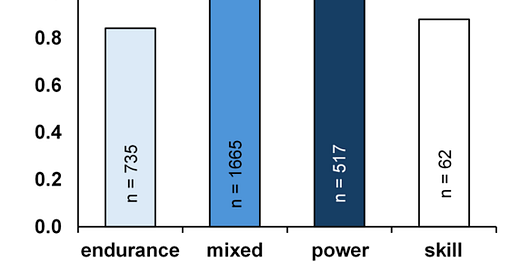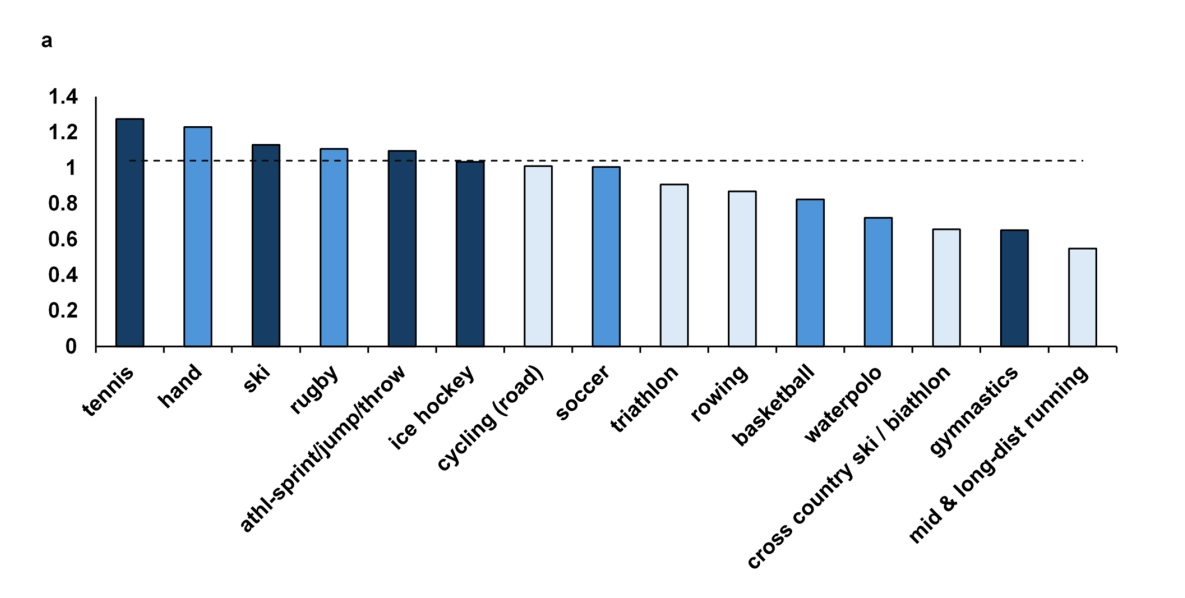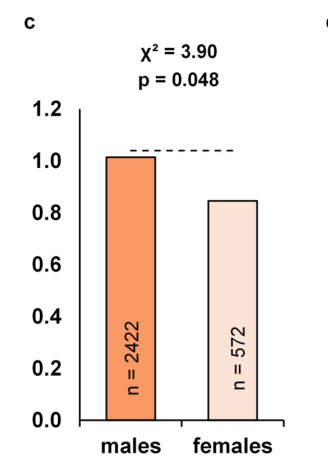Do endurance athletes have more daughters than sons?
Some sports significantly increase the likelihood of having daughters and we don´t know why.
Did You Know Most Elite Athletes Have Daughters?
Just a few days ago, a study was published titled “Effects of sports disciplines on the sex ratio of children born to elite athletes”, conducted by a research group from the University of Montpellier and led by François Favier.
The main finding is that elite athletes are more likely to have daughters than sons—and this effect is even stronger in endurance athletes.
The birth rate of boys and girls is generally quite balanced, although slightly more boys are born than girls. The sex ratio (the number of males per female) tends to range from 1.04 to 1.05 worldwide. That means for every 100 girls born, there are usually 104 or 105 boys.
However, this study analyzed 2,130 elite athletes and 3,000 births and found that the sex ratio for endurance athletes is significantly lower than for strength or team sport athletes.
The average sex ratio for professional athletes is 0.98. That doesn’t seem like a big difference, but it already represents a 6% lower probability of having sons compared to the general population.
But when the data is broken down by sport, the results are even more striking and unexpected. In runners, the lowest sex ratio was found, with an average of 0.55. That means endurance runners are 26% more likely to have a daughter than strength athletes.
The average sex ratio for endurance athletes is 0.81, meaning that for every 100 girls born, only 81 boys are born. But this varies by sport: in middle- and long-distance running, the ratio drops to 0.58; in triathlon, it's 0.86; and in road cycling, it's 0.98.
By contrast, strength and explosive sports tend to maintain or even exceed the general population's sex ratio, as seen in tennis, handball, skiing, rugby, and certain track and field events (discus, hammer, javelin, jumping).
Another notable finding is that female athletes have an even lower sex ratio than male athletes. In other words, in any given sport, if the mother is the elite athlete, the chance of having a daughter is higher than if it’s the father.
However, this only applies if the woman has children during her athletic career. If she becomes a mother after retiring from competition, the sex ratio is closer to the general population.
So, what explains these results?
It seems clear that the main factor is the intense physical activity and the energy deficit or physiological stress these athletes experience during their careers.
That the sex ratio is lower in athletes with historically more restrictive diets and higher energy deficits or training loads suggests that these factors partly influence the baby’s sex.
We could consider more reductionist explanations, like the testosterone or cortisol levels of the parents and how they might affect reproduction, but in my view, the best explanation comes from the evolutionary Trivers-Willard hypothesis.
This hypothesis suggests that periods of scarcity favor the likelihood of having daughters, as daughters are more likely to ensure the survival of the species.
Since a male can potentially father thousands of children, but a woman rarely has more than 15, the bottleneck in species survival lies with the number of females.
Males may play a greater role in accelerating species adaptation and evolution, since they face more selective pressure and compete more intensely for reproduction—so only the fittest reproduce in many species.
But females are far more important for species continuity, as they are the ones who actually allow it to persist. So it makes sense that in times of abundance, more males are born, and in times of scarcity, more females.
In this study, it seems clear that parents living in an energy deficit were more likely to have daughters—the greater the deficit, the greater the effect. The highest deficits were found in athletes most affected by weight’s impact on performance (long-distance running), more so than other tough sports like triathlon or cycling.
Limitations
Even so, we should be cautious when interpreting this article. First, because the data were collected through online sources such as Wikipedia, social media, and sports news, which may include errors, omissions, or incomplete information (for example, parents who choose to keep their children's identities private).
Another major limitation is the lack of a proper control group: the study did not compare athletes with a sample of non-athletes with similar characteristics (age, sex, country, socioeconomic level). Most athletes analyzed were from wealthy countries, so other factors besides exercise may explain why they had more daughters—factors the study did not detect.
We also lack relevant data on the parents, such as hormonal status, weight or body fat percentage at conception, partner’s age and health, use of contraception, supplements, or even doping substances, all of which could influence the results in ways that can’t be assessed with this data alone.
So, while there’s still much to explore, I find it fascinating that we continue to uncover evolutionary mechanisms through which the body’s biological wisdom seems to stay ahead of our scientific understanding.
Also, if you want to have a child of a specific sex, you could use these findings to improve your odds—just remember we’re talking about probabilities, not certainties.
I love this mix of sport science and biology!
Manu








Fascinating! Thanks for sharing